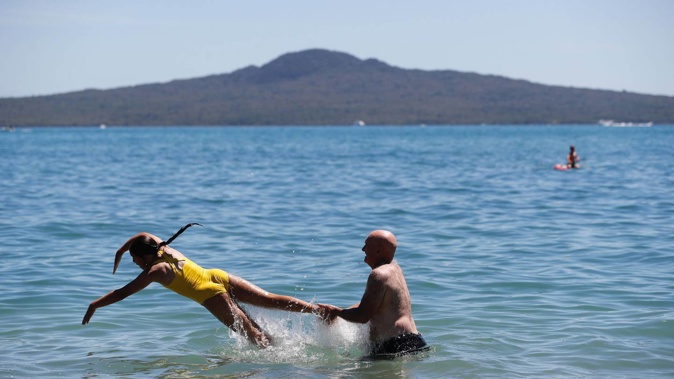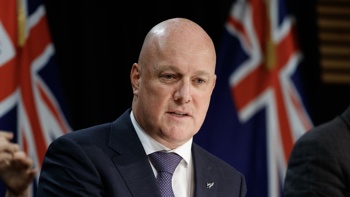
Auckland's worst beaches have been ranked in damning new data as a $106 million rates rise to clean up sewage from them is being fast-tracked by politicians.
A push to raise Auckland's water quality targeted rate (WQTR) by up to 5 per cent every year for the next decade would mean by 2030/31 the average residential property would be paying $94 to fix the city's legacy sewerage system.
The average business would be paying $435 in water quality rates in a decade's time.
The WQTR was introduced in 2018 to pay for the separation of Auckland's legacy stormwater infrastructure that regularly becomes overflowed with sewerage after rain events because of shared pipes between the two systems.
New data released to the Herald today shows the 10 worst polluted Auckland beaches in 2020 were unsafe to swim one to two days a week on average.
The top 10 most polluted are spread all over the Auckland region:
- Herne Bay (unswimmable 20 per cent of the time).
2. Little Manly (unswimmable 19 per cent of the time).
3. Huia (unswimmable 18 per cent of the time).
4. Torkar Bay (unswimmable 16 per cent of the time).
5. Pah Beach (unswimmable 16 per cent of the time).
6. Home Bay (unswimmable 14 per cent of the time).
7. Weymouth (unswimmable 14 per cent of the time).
8. French Bay (unswimmable 14 per cent of the time).
9. Te Atatu (unswimmable 12 per cent of the time).
10. Grannys Bay (unswimmable 12 per cent of the time).
This list does not include the following seven beaches that have permanent warning signs alerting beachgoers not to swim at any time because of "consistently poor water quality": Coxs Bay, Fosters Bay, Green Bay, Meola Reef, Titirangi Beach, Wairau Outlet, and Wood Bay.
The rankings are taken from data compiled from the Auckland Council SafeSwim website, which allows beachgoers to check the safety of most beaches in Auckland in real time.
The push for the increase to the WQTR was made to speed up and expand the areas of Auckland that are having their sewerage and stormwater systems brought up to modern standards.
Hobson Bay, in inner Auckland, has a permanent warning sign because of sewage in the water, making it unsafe for swimming. Photo / File
Since 2018, all of the infrastructure work done through the WQTR has been in the Western Isthmus - which includes inner-city suburbs to the west of the CBD and out to the outer western suburbs.
Auckland councillor Desley Simpson proposed the rates increase so work could be expanded to South and East Auckland, and the North Shore from 2022 - six years earlier than the original WQTR had planned for.
"By increasing it, we actually start new work, and that's what I want to do. I'm sick of having these beaches that are unswimmable in summer," Simpson said.
"What I want to do is see if Aucklanders agree to fast-track that work up by six years so we can actually start addressing the Manukau [Harbour], all those northern beaches, and Milford, Hobson Bay.
"We've got to start the work. If we don't increase the rate, nothing gets done on those beaches for six years.
The rates increase has been approved by Auckland Council's Governing Body to go out to public consultation, from February 22 to March 22.
If Aucklanders support the WQTR increase, it will be approved in the Mayoral Proposal for Auckland Council's 10-Year Budget 2021-2031.
It will mean from the 2021/22 financial year Auckland residents will pay $3.30 extra in rates per residence - a 5 per cent increase on the $65 they are already paying in the WQTR.
Every year after that, the increase will be 3.5 per cent.
By 2031, when the WQTR ends, the average Auckland residence will be paying $29 more than they would without the proposed increase - $94 in total.
This option will provide revenue of $106.2 million to fix the city's beaches over the decade on top of the original WQTR.
Safeswim head of department Nick Vigar said the WQTR was a blessing in a year in which many Auckland Council budgets were slashed because of Covid-19 austerity.
"It's the fact that it's targeted towards a particular outcome. We get a bunch of funding to do various things within the business but we had an interesting year, obviously, in terms of Covid and austerity," Vigar said.
"The big plus about the WQTR is it stayed constant, so it gives us a lot of certainty in terms of delivering those outcomes.
"There's beaches on Great Barrier Island, there's beaches all around the region that have issues, so any continuation in the WQTR really helps us to maintain the presence of that program around the region. Some of those things take time.
"We've been getting really good gains out of the programmes from the WQTR, so we're looking to up their profile around the region."
Mayor Phil Goff brought in the WQTR designed to raise $450 million over a decade and bring forward the major water-quality programmes, including the Western Isthmus programme - jointly funded with Watercare - by 20 years.
When the WQTR was proposed in 2018, it was supported by 67 per cent of the 7000 Aucklanders who provided written feedback.
The WQTR has already helped progress the swimming quality of Auckland's worst beaches.
For example, in 2018, Herne Bay Beach was unsafe for swimming 30 per cent of the year.
While Herne Bay is the worst beach in Auckland in 2020, this unswimmable rate had improved to 20 per cent.
Take your Radio, Podcasts and Music with you









